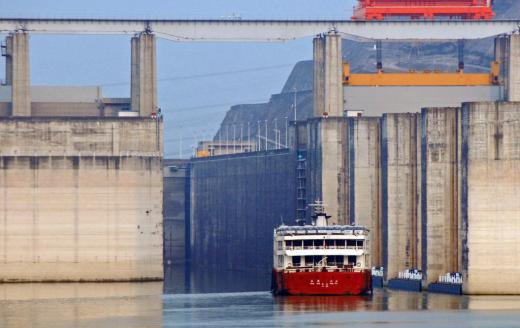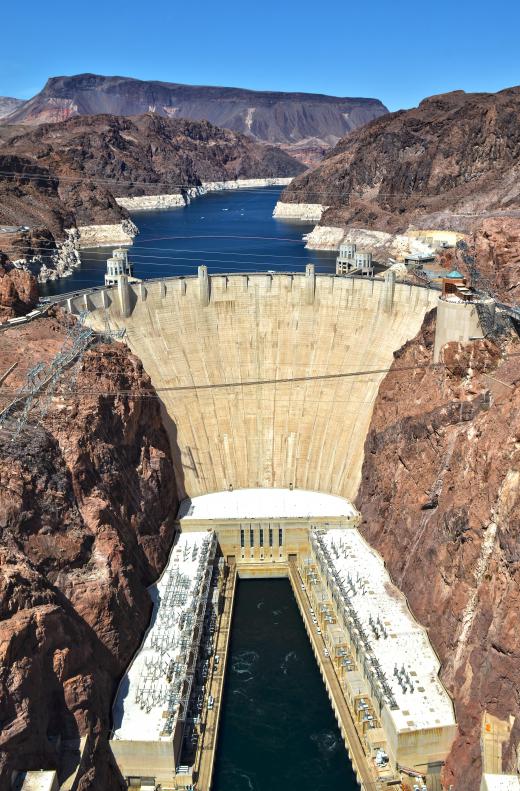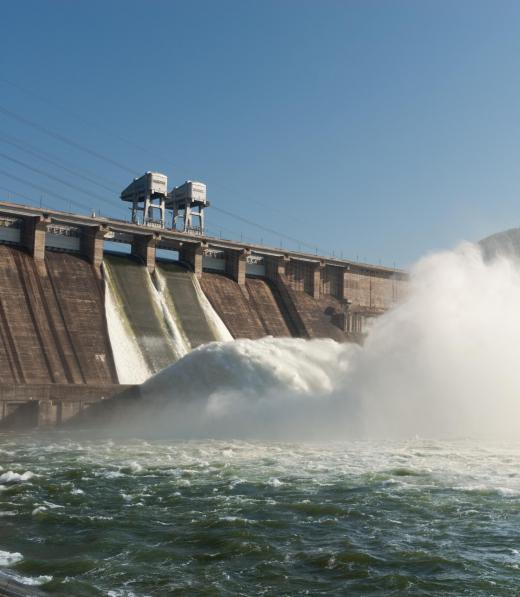What is a Hydropower Dam?
A hydropower dam is a dam which enables power to be generated using the energy of flowing or falling water. When a hydropower dam is used to generate electricity, the resulting energy is variously called hydroelectricity, hydropower energy, water power, or hydroelectric power. Hydropower dams provide a very important source of renewable energy.
Power plants, whether they are fueled by burning fossil fuels such as coal or powered by water, often use a similar mechanism to generate electricity. This mechanism usually works by using the power from the fuel or water to turn a turbine, which is like a propeller. The turbine in turn causes a shaft to rotate and turn a rotor inside a generator, creating electricity. Power cables attached to the generator then carry the electricity away ready for use in homes and businesses.

The ideal location to build a hydropower dam is usually on a large river in a place where there is a big drop in elevation. The dam normally causes a large volume of water to be retained in the reservoir at the back of the dam. In a hydropower dam, there is a water intake which leads to a tunnel through the dam, which is called a penstock. As gravity causes the water to flow through the penstock, the moving water rotates the turbine which is usually located at the lower end of the penstock.

Some hydropower dam systems have multiple reservoirs and may use these to help meet fluctuating demands for power. Water may be moved between different reservoirs at different elevations. For example, at times of low demand, surplus electricity may be used to pump water up into a reservoir at a higher elevation. Then at different times, when electricity demand is higher, extra power can be generated quickly by releasing additional water from a higher reservoir to a lower one.

A hydropower plant, once constructed, can potentially generate energy for many years with minimal production of pollution. Compared with methods of energy production that rely on the burning of fossil fuels, hydropower dams provide an environmentally friendly alternative. When considering the environmental impact of a hydropower dam, however, it is important to take into consideration the effects that such a dam may have on aquatic life both upstream and downstream of the project. A hydropower dam may have a significant impact on the ecosystem of the river on which it is built.
AS FEATURED ON:
AS FEATURED ON:














Discussion Comments
@Scrbblechick -- True, and TVA is one of the few government programs that is actually self-sufficient! The dams have long since been paid for, and they produce a lot of power!
On the Tennessee River, the dams also provide flood control, which you mentioned, as well as reliable shipping lanes. Before the river was dammed, it was too shallow in spots for barges, but now is almost fully navigable.
The hydropower dam aspect has changed the area for the better, for sure.
When the Tennessee Valley Authority built the first dams on the Tennessee River, they were primarily for flood control and power generation was a byproduct.
However, since the system has been completed, it's been a real shot in the arm for the areas that have dams serving them. These dams and the resulting power plants have created thousands of jobs, as well as saved millions of acres of farmland and residents from being flooded out every spring.
Post your comments